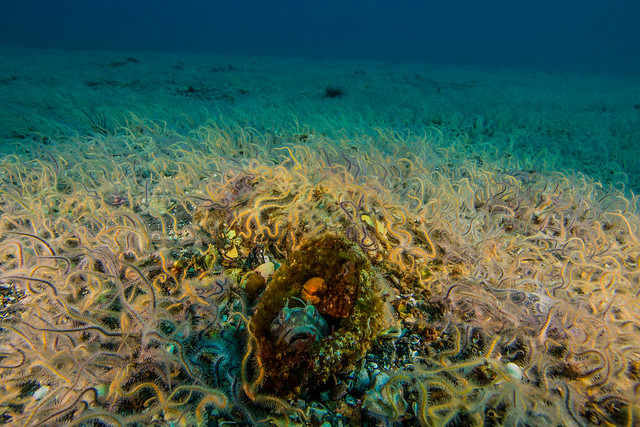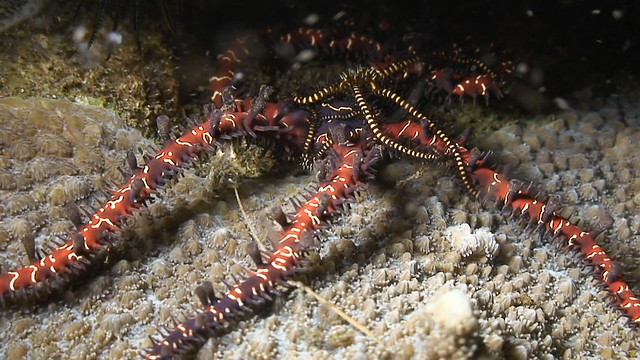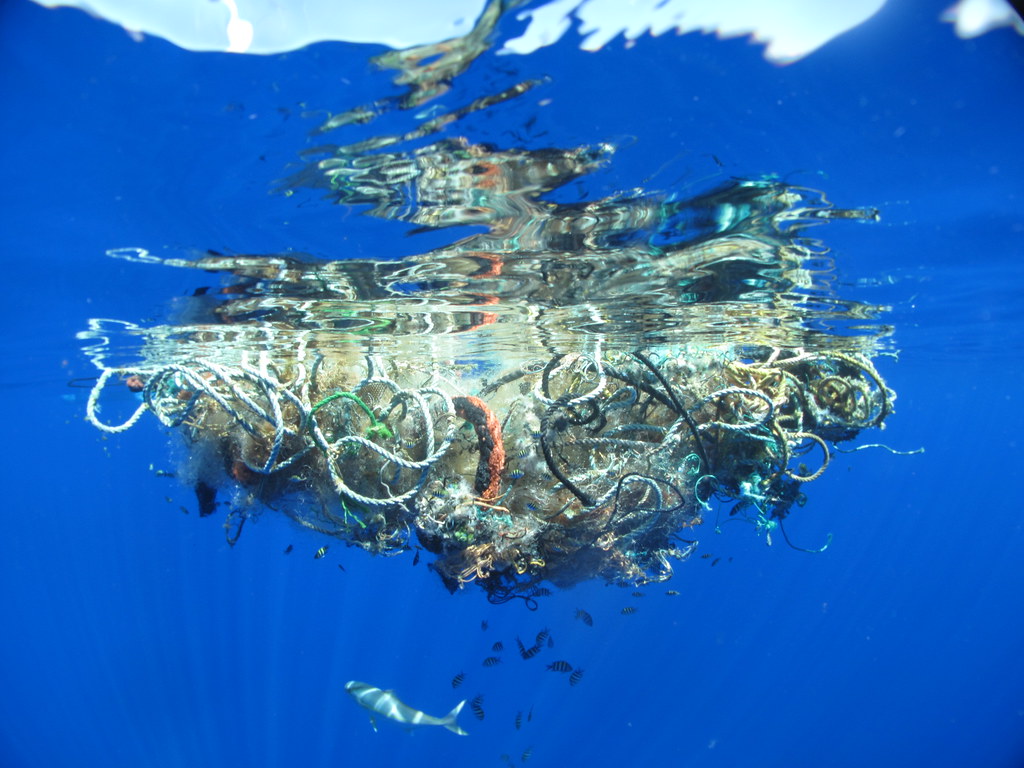
Brittle stars are EVERYWHERE. They are not only the most diverse (over 2000 species), but also the most ABUNDANT of echinoderms (go here for the full thing)
The truth is that they live frakkin' EVERYWHERE. The diversification of brittle stars is thought to have been successful mainly because they've found a niche just about anywhere and everywhere they can! They live in all the nooks and crannies on the marine bottoms: buried in sediment, rocks, sponges, corals so on and so forth..

Some Brittle stars live in some of the deepest places on earth down to >8,000 meter depths! (here)
But brittle stars also manage to find some pretty crazy, unusual and just downright SURPRISING places to live. Are there ANY habitats which which they cannot exploit???
Here's a few of them....
Ophiuroids GO where other Echinoderms fear to tread!
1. Floating Plastic Garbage.
A recent paper by my colleague Miriam Goldstein et al. (2014) in Marine Biology has documented ophiuroids among the plastic garbage debris "islands" found in the North Pacific. In this case, I'm told, there were hundreds among some of the ropes on these bundles... (my thanks to Miriam and her co-authors for the paper & sharing their info!)
Although garbage/debris is created by humans, it may functionally serve as just another venue for brittle stars to practice rafting, which is one means for animals that don't swim as adults, to be dispersed widely via ocean currents.
I've also written about the tiny, 6-rayed brittle star, Ophiactis which has likely been transported all around the world via human activity, probably like this and several other ways.....
2. Jellyfish.
Speaking of one of those other ways?? I wrote about brittle stars "rafting via jellyfish" in one of my posts from 2009! (here) But the short version is that some species are regularly found inside jellyfish for uh..... various possible reasons (go see the post to see the discussion why..)
another great pic of this can be found over here!
 |
| via Thomas Peschak Photography |
Here is ANOTHER place you generally don't expect to find echinoderms. Why? Because most of the environment around hydrothermal vents is not just, very, VERY hot but also filled with toxic chemicals, such as hydrogen sulfide.
 |
| East Pacific Vent from this R. Blake's page |
Observe Ophiolamina eprae from the East Pacific Rise. And there are actually about three others that live in and around vent settings...
This species actually looks like it lives directly in the path of some of the hot water and toxic materials...
 |
| From IFREMER |
 |
| Image via Florida shellfish ID guide |
Salinity in ocean water ranges about 30-50 ‰ (ppt) and freshwater is generally less than 0.5 ‰ (ppt). A lot of sea stars, for example start to get unhappy when you drop below 30ish ‰ (ppt).
Another species in the Amphiuridae, Amphipholis squamata has been recorded as withstanding salinity as low as 5 ‰ !!
 |
| from Wikipedia! |
5. Crinoids!
Here's one species, Ophiomaza chaotica a strikingly black and white species which famously lives on feather stars! A short write up on it at Wild Singapore here.



BONUS!
and I found this pic of a tiny striped brittle star living on Ophiomastix annulosa Another example of commensalism?? Maybe one just incidentally crawling on the other? It wasn't actually clear and unfortunatley I couldn't actually find a record Ophiomastix-on-Ophiomastix action..so for now a mystery...

There ARE some accounts of brittle stars living symbiotically on other brittle stars but for various reasons, those are the subject of a future post!
UPDATE: Should also have mentioned that brittle stars live on that other extreme deep-sea habitat-WOOD. But that's a story for another day...
 |
| Borrowed from my friends at Deep-sea News |

No comments:
Post a Comment